Abundance: plentiful
What: berries (red, pink or white), young leaves, inner bark
How: berries raw, dried, jelly, wine. Young leaves in salad. Inner bark can be boiled and eaten all year.
Where: Woods, borders between woods and fields, urban landscapes
When: spring
Nutritional Value: high in vitamins C&K, minerals and some carbohydrates
Mulberry flowers in mid-March in Houston.
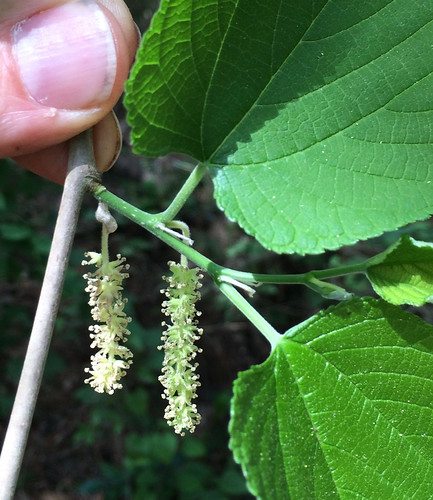
Ripe and unripe mulberries (picture taken in late April).
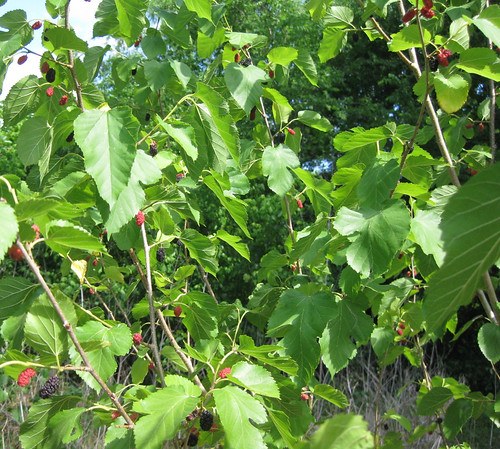

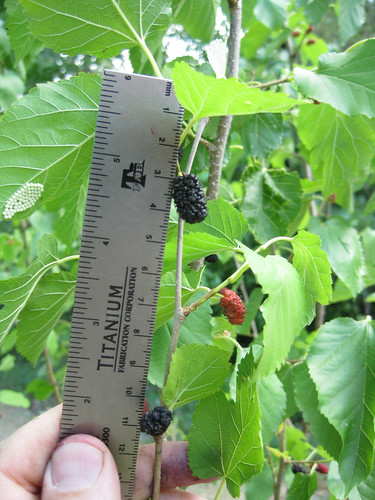
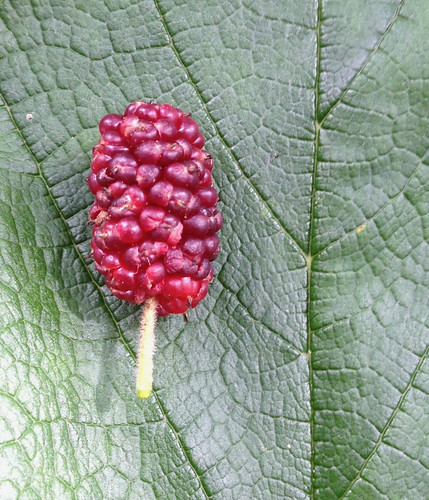
Leaves all from the same Mulberry tree. They can have 0-5 lobes.
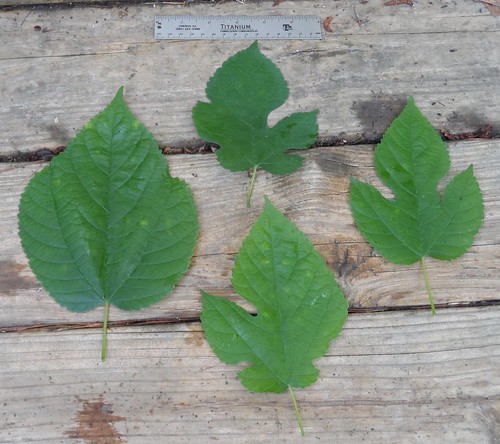
Young mullberries (picture taken in November)

Mulberry seedlings are very odd looking with leaves very differently shaped than those of mature trees.
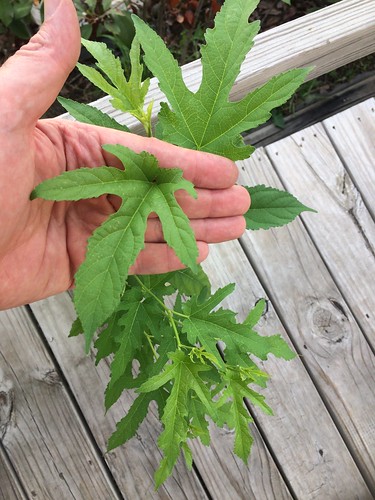
Texas distribution, attributed to U. S. Department of Agriculture. The marked counties are guidelines only. Plants may appear in other counties, especially if used in landscaping.

North American distribution, attributed to U. S. Department of Agriculture.

Usually preferring a bit of shade to full sun, mulberry trees are found just about anywhere trees grow in Texas though they usually like a fair amount of water. The leaves are highly variable, ranging from unlobed to five lobes and drop off in the fall, not reappearing until spring. The bark of mulberry trees is smooth and gray. The wood is strong and makes good tool handles.
Come spring, the young leaves can be collected and added to a salad. The inner bark (cambium layer) can be pounded into into fines then boiled into a rough porridge.
The immature berries are white and should not be eaten. Ripe berries can vary in color from white to dark purple. You can tell they are ripe when they come off the tree with just a slight tug. Mulberry fruit is usually ready just after blackberries ripen leading to a supply of lots of berries.
The easiest way to harvest the berries is lay a tarp or sheet under the tree and then shaking the branches. Ripe fruit will fall onto the tarp where they are easily collected.
Buy my book! Outdoor Adventure Guides Foraging covers 70 of North America's tastiest and easy to find wild edibles shown with the same big pictures as here on the Foraging Texas website.

